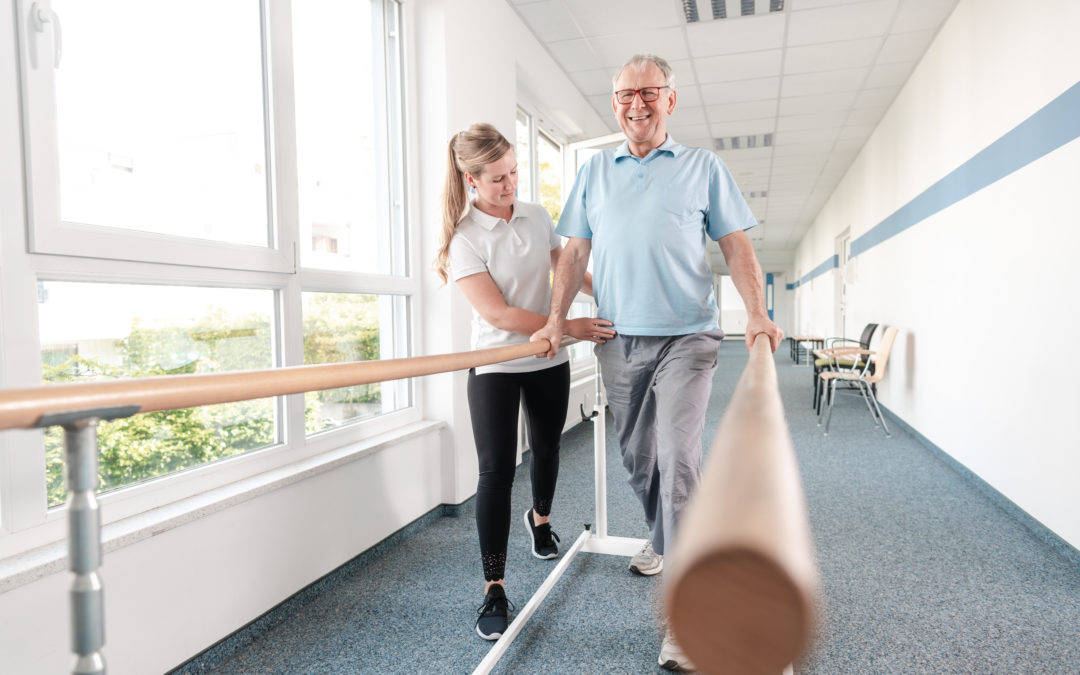Reference
Jennifer S. Brach, PhD, PT; Subashan Perera, PhD; Sandra Gilmore, RN, MS; Jessie M. VanSwearingen, PhD, PT; Deborah Brodine, MHA, MBA; Neelesh K. Nadkarni, MD, PhD; Edmund Ricci, PhD.
Effectiveness of a Timing and Coordination Group Exercise Program to Improve Mobility in Community- Dwelling Older Adults: A Randomized Clinical Trial.
JAMA Intern Med. 2017; 77(10):1437-1444
At a glance
The aim of the study is to evaluate the effectiveness of an Adapted Physical Activity programme proposed to elderly subjects; the interventions were focused on specific walking exercises, in particular on rhythm and coordination.
The results show that they can improve the functionality of walking, in terms of distance travelled and speed. The programmes structured in this way were more suited to the needs of older people.
It has been reported that adherence to treatment in programmes of this type is reduced compared to standard exercise programmes: this aspect should be taken into account in the definition of Adapted Physical Activity programmes, in order to optimise this aspect as well.
What is already known
For older people losing a functional path is not only a disabling condition in itself, but also an important risk factor for the development of comorbidity and increased mortality.
Physical activity programmes in groups are essential for older people to maintain their autonomy and safety when walking.
These programmes are often heterogeneous, without standardised items and specific objectives, with the risk of being applied in different ways depending on the operator and the target group. Therefore, it is rather difficult to compare them and examine their validity and effectiveness.
In certain contexts, the use of Adapted Physical Activity protocols allows to optimize the effectiveness of the proposed programs.
The aim of the study reported here was to evaluate the effectiveness of interventions focused on the rhythm and coordination of the walk (On the Move group-based program). The hypothesis is that this approach can optimize the functional aspects of walking and reduce disability while maintaining a good tolerability and safety profile.
Design and Method
The study is cluster-randomized single-blind. The total number of participants is 424, with an average age of 80 years and a history of about 3 associated chronic diseases. The subjects included had to be able to walk at a speed of at least 0.6 m/s, without aids other than a cane.
The subjects were randomized into two groups: the first was proposed the protocol in study (On the Move, OTM) while the second a traditional exercise program (Usual care). Both models were structured in two weekly sessions of group exercises lasting 50 minutes each, for a total duration of 12 weeks.
The On The Move programme essentially involves standing exercises (and only 10 minutes with seated activities). It is based on the principles of motor learning and automatic movement control. It includes an initial warm-up phase, a specific exercise phase for walking (stepping, walking exercises for rhythm and step coordination), a muscle strengthening phase and final fatigue.
The stepping component, in particular, aims at acquiring an agile ability to move the centre of mass, while the therapeutic walking component is aimed at learning a correct timing of activation and coordination of the muscles during walking, varying the speed of walking, the amplitude of the step and integrating specific motor tasks during the activity.
The Usual Care programme, on the other hand, is carried out entirely in a sitting position. It includes a warm-up with stretching exercises, muscle strengthening and aerobic exercises consisting mainly of repeated movements at different speeds.
Main Results
The assessments were performed by investigators unaware of the treatment protocol applied prior to randomisation, at the start of the programme and at the end of the 12-week treatment period.
The primary outcomes were a specific questionnaire (Late Life Function and Disability Instrument, LLFDI), a stress resistance test (6-minute walk distance, 6MWD) and walking speed. LLFD is an instrument aimed at analysing the most frequent functional and disabling aspects in elderly people with acute or chronic diseases. The distance covered in the 6-minute walk distance and walking speed are very significant values both as indicators of safe walking and as predictors of disability, morbidity and mortality.
The subjects submitted to the study protocol (OTM) showed significant improvements in both 6MWD and walking speed. The LLFD score showed no significant changes.
There was a good degree of satisfaction in both groups with the work performed. However, in the OTM group, adherence to treatment was lower, i.e. with more sessions not performed. In addition, the adverse events recorded (4 total events consisting of falls, pain, excessive fatigue) occurred in the OTM group.
What’s New
This study suggests that the inclusion of targeted exercises, in particular elements of specific exercise for walking, is associated with an increase in motor skills in walking of older people.
The proposal of Adapted Physical Activity programmes aimed at these people must therefore consider these aspects in order to optimise their effectiveness in improving motor performance.
What the Prospects
The implementation of Adapted Physical Activity programmes for older people is crucial for the improvement of their motor skills.
Further studies should analyse the impact of these programmes on mobility, function and long-term disability.
By Alessio Baricich, Daria Cuneo

